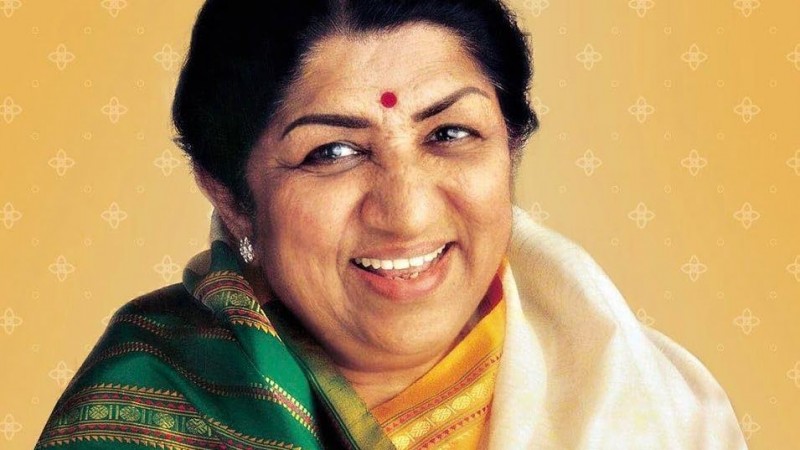
The name Lata Mangeshkar conjures up a symphony of feelings and melodies in the hearts of every Indian. The voice of Lata Mangeshkar, referred to as the "Nightingale of India," transcends space and time and captures the spirit of the people. She has recorded an astounding 11,000 solo, duet, and chorus-backed songs in more than 20 Indian languages over the course of her prolific career, which began in 1947. Lata Mangeshkar's extraordinary musical journey is explored in this article, which also honors her contributions to Indian music and culture.
Lata Mangeshkar came from a musically-inclined family and was born on September 28, 1929, in Indore, India. Both her mother Shevanti Mangeshkar and her father Pandit Deenanath Mangeshkar had a strong passion for music. Her father was a well-known classical vocalist. It made sense that Lata would be drawn to music from a young age given her upbringing in such a setting.
Lata's father led her on her first musical journey while she was still a child. He carefully cultivated her natural talent. Her classical music training served as a springboard for her subsequent endeavors.
Lata Mangeshkar faced many difficulties during her first foray into the music industry. The Indian music industry was predominately male-dominated in the 1940s, which limited the opportunities available to female playback singers. Lata's extraordinary talent and unwavering determination, however, were unstoppable.
In 1942, she was given her first chance to work in the film industry when she performed the song "Natali Chaitraachi Navalaai" for the Marathi movie "Kiti Hasaal." Her early attempts to establish herself as a playback singer in Hindi films met with failure, and she endured rejection and criticism along the way.
The late 1940s and the early 1950s were when Lata Mangeshkar's fortune underwent a significant change. She was given the chance to sing for the 1949 movie "Barsaat" by the composer team Laxmikant-Pyarelal, and the song "Jiya Beqarar Hai" quickly became popular. Her career took a turn after this, and she received many offers from music producers and movie producers.
Particularly noteworthy was her partnership with S.D. Burman, the music director. Lata Mangeshkar was recognized as the top playback singer in Hindi film thanks to songs like "Pyar Hua Ikrar Hua" (Shree 420, 1955) and "Tere Bina Aag Yeh Chandni" (Awara, 1951), which have become iconic.
Lata Mangeshkar is distinguished by her versatility and her ability to sing in a variety of Indian languages. She dabbled in regional playback singing in Bengali, Marathi, Tamil, Telugu, Gujarati, Punjabi, and Kannada, among other regional tongues. Her songs resonated with listeners all over India despite language barriers.
The classic song "Ae Mere Watan Ke Logon," which she performed in Hindi at the Ramlila Grounds in New Delhi on January 27, 1963, is among her most famous multilingual performances. Prime Minister Jawaharlal Nehru cried while listening to the song, which was written by Kavi Pradeep and performed by C. Ramchandra. The song later became known as a patriotic anthem.
Legendary playback singers like Kishore Kumar, Mohammed Rafi, and Mukesh have performed duets with Lata Mangeshkar. Some of the most enduring songs in Indian cinema were the result of her chemistry with these male playback singers. Music lovers are still captivated by songs like "Yeh Shaam Mastani" (Kati Patang, 1970) with Kishore Kumar and "Tera Mera Pyar Amar" (Asli Naqli, 1962) with Mohammed Rafi.
She worked with renowned composers like S.D. Burman, R.D. Burman, Naushad, and Shankar-Jaikishan to add timeless melodies to Indian music. Her voice was frequently adapted to by composers, resulting in a special synergy that produced songs with lasting appeal.
Lata Mangeshkar produced a number of iconic songs throughout her career that have forever changed Indian music. Here are a few of these:
(1964's Woh Kaun Thi) "Lag Ja Gale Ke Phir"
(1960's Dil Apna Aur Preet Parai) "Ajib Dastan Hai Yeh"
(Veer-Zaara, 2004) "Tere Liye"
(Aashiqui 2, 2013) "Tum Hi Ho"
Numerous accolades and awards have been given in recognition of her outstanding contributions to Indian music, including the Bharat Ratna, the country's highest civilian honor, in 2001. Several Filmfare Awards, four National Film Awards, and the Dadasaheb Phalke Award are among the honors she has received.
Lata Mangeshkar has made contributions to music as well as been actively involved in charitable work. She has contributed to many altruistic causes, such as healthcare and education. Her commitment to having a positive influence on society is reflected in her dedication to humanitarian causes.
Over the course of her career, Lata Mangeshkar represented India as a cultural ambassador, crossing international boundaries to advance Indian music. Her appearances in foreign venues and partnerships with foreign musicians gave the world a glimpse into the depth and variety of Indian music.
The 11,000 songs in more than 20 Indian languages that make up Lata Mangeshkar's musical career are evidence of her unrivaled talent, unwavering commitment, and enduring legacy. Her charming voice has entertained generations and made a lasting impression on India's cultural heritage. She is more than just a playback singer; she also serves as the voice of the country and is an institution. For many generations to come, Lata Mangeshkar's contributions to Indian music and culture will continue to be felt, guaranteeing that the Nightingale of India will always hold a special place in the hearts of music fans.
Celebrities with schizophrenia diagnoses
Meet the celebs who converted to other religions
Kiccha Sudeep Turns 52: Fans Wish Abhinaya Chakravarthi on His Big Day